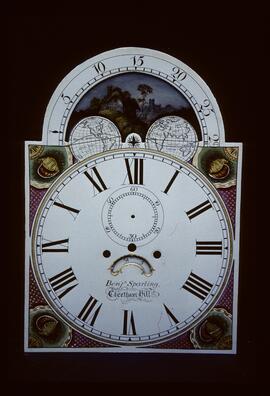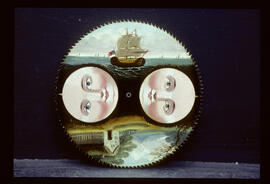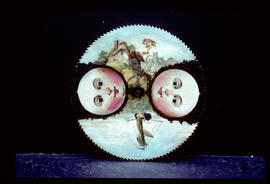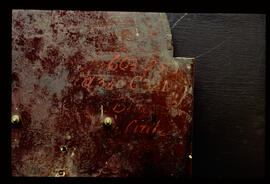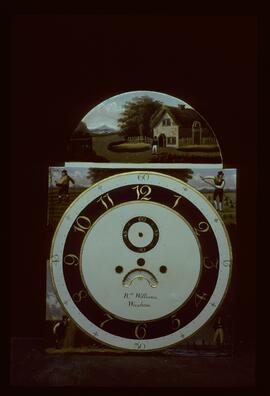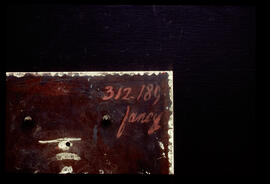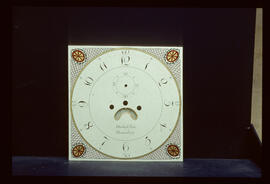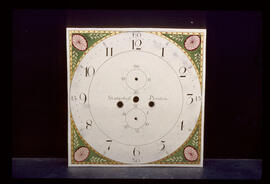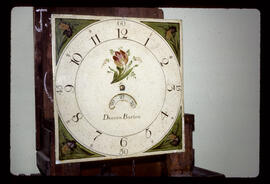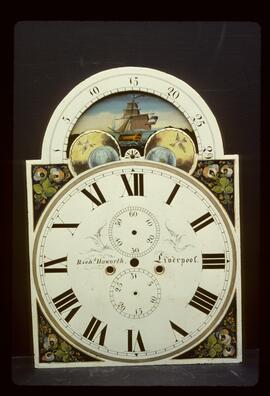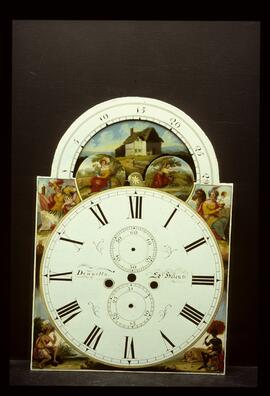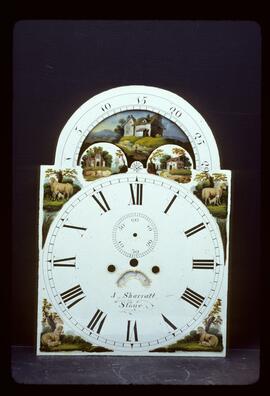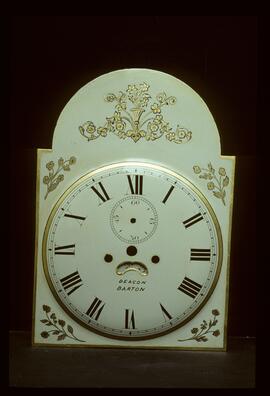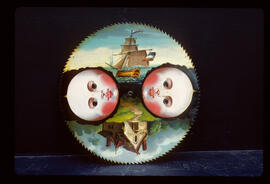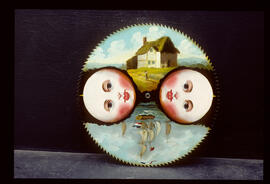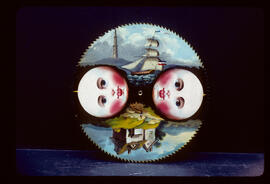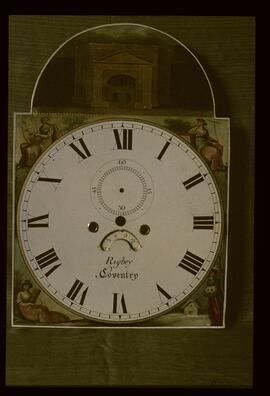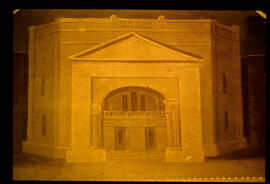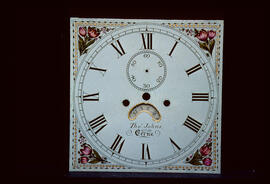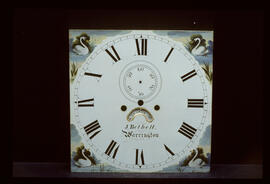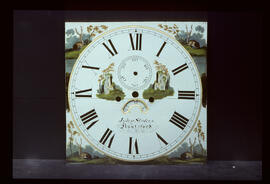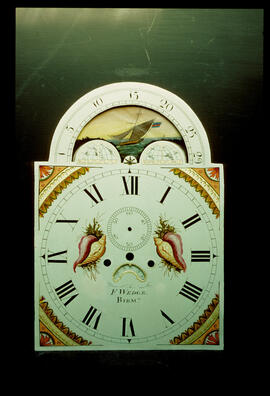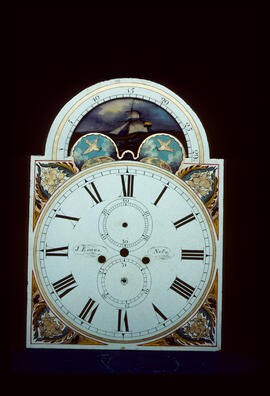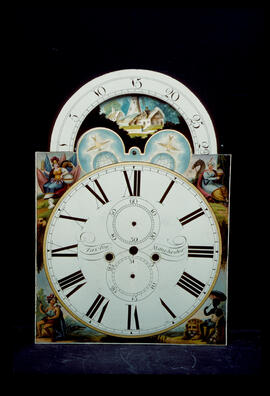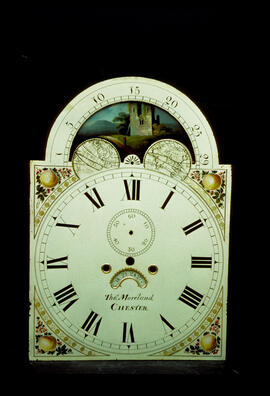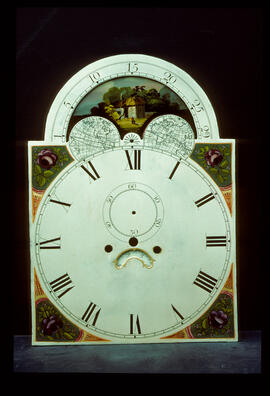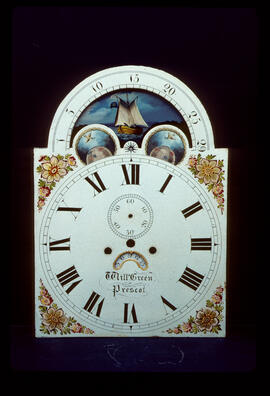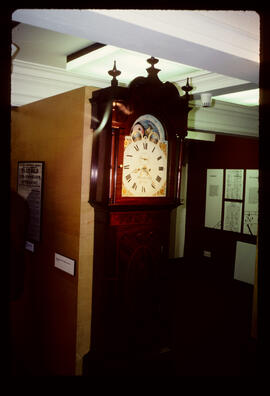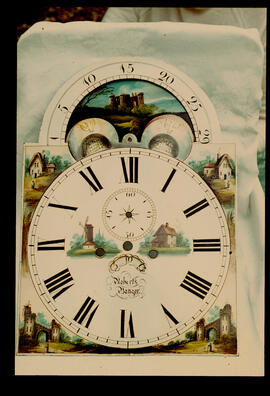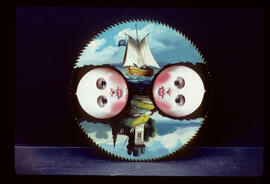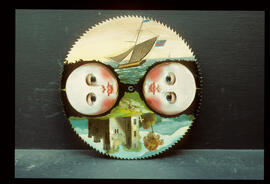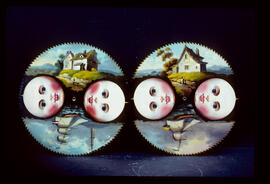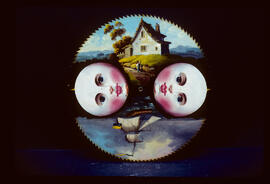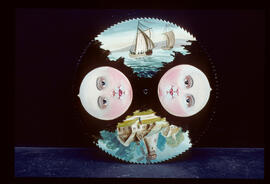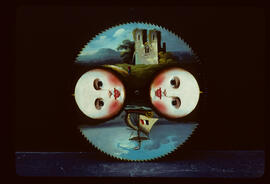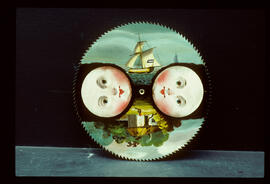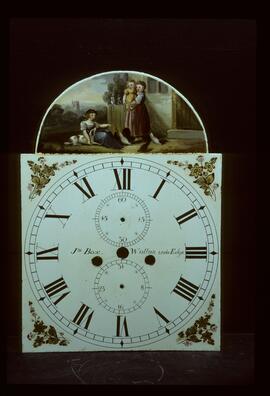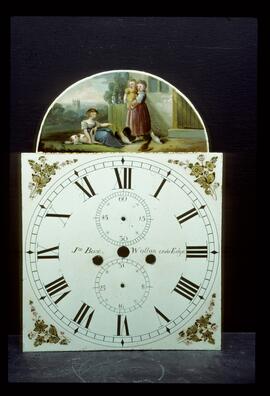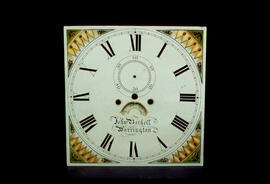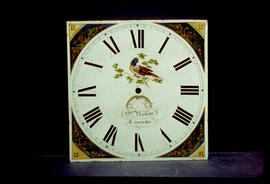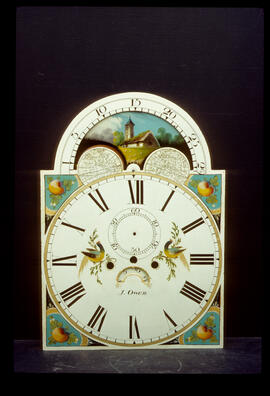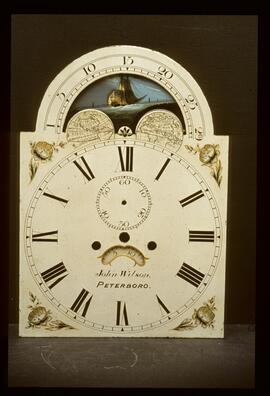Contains handwritten notes, sketches and tracings. Originally numbered "C10" (duplicate number).
Contains sketches and tracings.
Contains handwritten notes, sketches and tracings.
Contains one note only.
Contains annotated tracing.
Contains annotated sketches.
Contains handwritten notes, sketches, tracings and cutouts.
Contains annotated sketches.
Contains annotated sketches.
Contains two tracings.
Contains handwritten notes, sketches and tracings.
Contains handwritten notes, sketches and tracings.
Contains handwritten notes and tracings.
Contains annotated sketches and tracings.
Contains annotated sketches and tracings.
Contains handwritten notes, sketches and tracings.
Contains letter from "John" and a small sketch.
Contains one note only.
Contains handwritten notes, sketches and tracings.
Contains annotated sketches.
Contains handwritten notes, sketches and tracings.
Contains letter from Mrs F. H. Pratt and sketches of back and front plates.
Contains annotated sketches and tracings. Annotated "see photos" but no photographs are included in the file.
Contains handwritten notes, sketches and tracings.
Contains handwritten report, annotated sketches and tracings.
Contains notes, tracings, sketches and a typewritten report on the clock's condition and provenance.
Printed. Includes five b/w photographs and the following articles: "The earliest string-gnomon sundials" (1976); "An early pocket sundial illustrated in art" (1979); "A 15th century Italian 'clockmakers'' workshop" (1980); "A sixteenth-century clock illustration" (1982); "An interior church clock dial in Haarlem" (1984); and "Clocks in the paintings of Titian" (1985).
This series comprises research notes on clockmaking in regions of England (Surrey, Middlesex, Hampshire and the Isle of Wight) and the Black Forest, possibly assembled by E. John Tyler.
Original article from Science News no. 38 (Penguin Books, 1955), pp. 101–105.
Original article from The Antique Dealer and Collectors' Guide (August 1978), pp. 57–61.
Original articles from Antique Collecting, vol. 23 no. 10 (March 1989), pp. 4–20. Includes antique clock dealers' advertisements pages and directory.
Original reviews from "The Connoisseur Bookshelf" section of The Connoisseur (n.d.), pp. 57–60. Also includes reviews of non-horological books.
Original article about the 1930s design from The Antique Collector (February 1982), pp. 72–75.
Images of dials made by Richard Blood, a Birmingham dial maker.
Main dial: geometric corners with oval, dull colours.
Images of dials made by Richard Hipkiss, a Birmingham dial maker active in the 1780s–1840s
Main dial: gold flared Arabics on dark blue chapter ring; bluebell inn in breakarch, mountain in background; man with four seasons in corners, long clay pipe. False plate: cast iron.
Main dial: centre painting Britannia, lion and ship at sea, gold flowers corners.
Main dial: off-white base colour, pink draped corners, gold fans, green wreath with red berries. Hemispheres: almost gone.
Main dial: off-white, shells in corners on gold and white. Hemispheres: very little left, outside numbers latitude. False plate: altered.
Moon faces: wide-eyed, pursed lips, heavy varnish. Moon scenes: house with mountains; peanut ship.
Moon faces: pale. Moon scenes: ship; cottage, tree ruin in distance.
Main dial: gold flared Arabics on dark blue chapter ring; bluebell inn in breakarch, mountain in background; man with four seasons in corners, long clay pipe. False plate: cast iron.
Main dial: gold flared Arabics on dark blue chapter ring; bluebell inn in breakarch, mountain in background; man with four seasons in corners, long clay pipe. False plate: cast iron.
Main dial: off-white, corners in pink/black with gold oval and laurel leaves. False plate: Hipkiss cast iron.
Main dial: off-white, corners in pink/black with gold oval and laurel leaves. False plate: Hipkiss cast iron.
Main dial: off-white, pink ovals set in green with gold leaves, flat gold-framed corners. False plate: cast iron.
Main dial: corners green background with carnations, tulip centre.
Eight pages. Includes information about a silver pair-cased watch from 1789 and three pedometers.
File marked RC13/3. Includes correspondence, descriptions, journal articles, photographs and negatives relating to Robin-type escapement (Robert Robin, 1742-1799 was a French clockmaker and inventor of the combined anchor-spring escapement). Also includes a copy of Horlogerie Ancienne (December 1978).
This collection comprises research papers compiled by Tom Robinson. They include subject files relating to clocks of various types and provenances and to individual makers, as well as photographs.
Robinson, TomTwo copies of an original article from The Antique Dealer and Collectors' Guide (November 1974), pp. 76–77.
Original article from The Antique Collector (1955), pp. 220–221.
Includes typewritten letters, extracts from journal articles, and nine photographs and drawings. Also includes letter from Instituto e Museo di Storia della Scienza, Florence, Italy.
File marked RC5 and annotated "Roger's father's sketches for various projects" and "Dad's sketches etc, all undated and for various projects". Includes handwritten notes and rough sketches of clock elements and movements.
Original article from The Antique Dealer and Collectors' Guide (November 1978), pp. 114–116.
Original article from Antique Collector (December 1958), pp. 211–220.
Bound printed alphabetical list of names of clockmakers, watchmakers, jewellers and other horology-related professionals, compiled by R.F. Carrington from four series of fire policy registers of the Royal Exchange Assurance Company (The London Archives ref. CLC/B/107/02/MS07252–MS07255). Gives name, policy register volume number, placename and occupation.
Handwritten extracts from volumes 1–7 of the fire policy register MS 7252, including an alphabetical name index and individual policy details.
Handwritten extracts from volumes 1–98 of the fire policy register MS 7253, including an alphabetical name index and individual policy details.
Handwritten extracts from volumes 46–83 of the fire policy register MS 7254, including an alphabetical name index and individual policy details. Volumes 1-45 of this series do not survive.
Handwritten extracts from volumes 1–36 of the fire policy register MS 7255, including an alphabetical name index and individual policy details.
Fragment of an original article from Journal Suisse d'Horologerie et de Bijouterie: Revue de la Société Suisse de Chronométrie (n.d.), p. 159. Also includes first page of "La pierre d'horologerie".
Includes Sabrier's articles "Une Montre Expérimentale de Ferdinand Berthoud" and "Un Échappement a Roue de Rencontre sur Deux Niveaux", photographs and relates correspondence. Also includes papers relating to Pasquale Andervalt gas-wound clock.
Original article from The Antique Dealer and Collectors' Guide (November 1980), pp. 93–95.
Main dial: navy blue background and orange vetch corners, rather blue worlds, dove of peace humps.
Main dial: four continents corners, [seated dark-skinned figure]. Hemispheres: girls under trees in humps.
Main dial: sheep with background in corners. Hemispheres: one cottage, one church.
Main dial: gold flowers, black outlines. False plate: stamped sheet iron.
Main dial: theatre building in arch, four-season corners. Was labelled as DR11 and DR11a.
Main dial: theatre building in arch, four-season corners. Was labelled as DR11 and DR11a.
Main dial: gold under tulips corners, small dial, poor condition.
Main dial: square breakarch, 8 eight-day, well painted swans in corners.
Main dial: deer in corners, two ruins centre.
Images of dials made by Samuel Baker and Samuel Baker & Son, Birmingham dial makers active around 1826–50.
Main dial: some gold geometric corners, gold leaf heavy shells centre, odd checkerboard gold leaf black equator. Hemispheres: blodgy maps.
Main dial: gold flowers in corners with feathers. Hemispheres: gold dove of peace, gold scalloped edges, humps.
Main dial: signature scroll-like ribbon across dial centre, four continents, well painted, distinct style corners. Hemispheres: vague words and doves of peace, gold band edges.
Main dial: peaches and gold band corners, maps.
Main dial: green background, red roses, corners gold ends. Hemispheres: maps.
Main dial: gold flowers in corners, gritty paint, worlds with dove of peace, scalloped gold edges in humps. Hemispheres: scalloped gold edges.
Main dial: gold flowers in corners, gritty paint, worlds with dove of peace, scalloped gold edges in humps. Hemispheres: scalloped gold edges.
Main dial: cottages and castles corners, one windmill and one cottage dial centre, vague worlds and dove of peace humps.
Main dial: gold flowers in corners, gritty paint, worlds with dove of peace, scalloped gold edges in humps. Hemispheres: scalloped gold edges.
Main dial: some gold geometric corners, gold leaf heavy shells centre, odd checkerboard gold leaf black equator. Hemispheres: blodgy maps.
Two moon dials, refferring to 509 and 516.
Main dial: signature scroll-like ribbon across dial centre, four continents, well painted, distinct style corners. Hemispheres: vague words and doves of peace, gold band edges.
Main dial: peaches and gold band corners, maps.
Main dial: green background, red roses, corners gold ends. Hemispheres: maps.
Main dial: gold flowers corners, scene of "cottage cares" in breakarch.
Main dial: gold flowers corners, scene of "cottage cares" in breakarch.
Main dial: gold with green ends corners.
Main dial: dark-blue background to corners, small orange flowers with bird and gold ends, bird centre.
Images of dials made by Samuel Wilkes and Wilkes & Son, Birmingham dial makers active in the 1820s and 1830s.
Main dial: turquoise background to corners with peaches; two birds centre. Hemispheres: maps. False plate: sheet iron, stamped "Wilkes".
Main dial: gold and Prussian blue flowers corners. Hemispheres: maps. False plate: sheet iron, stamped "Wilkes".
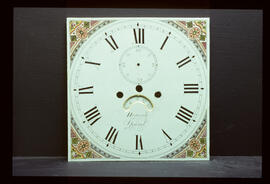
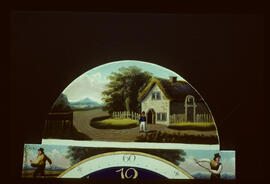
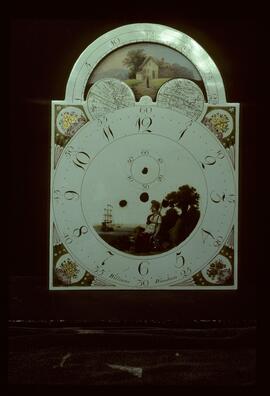
![Richard Hipkiss, Birmingham: Arched with moon dial, 1808+ / Clockmaker: Ja[me]s Evans, Kidderminster, c.1800](/uploads/r/ahs-lovat-lane/c/d/9/cd99f272cf60c16211a723f9b0ad0d6e924893ffe6263e31444139c89e0c6db2/4062_142.jpg)
